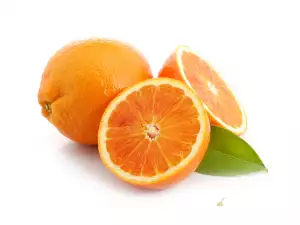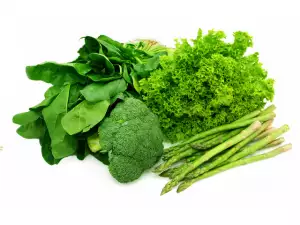Ascorbic acid, also known as vitamin C and L-ascorbic acid, is a water soluble vitamin. Its sodium, potassium, calcium salts are usually used as antioxidant food additives: E 300 ascorbic acid, E 301 sodium ascorbate, E 302 calcium ascorbate, E 303 potassium ascorbate.
Sources of Ascorbic Acid
In natural form, ascorbic acid is found in many products such as citrus fruits, potatoes, cabbage, rosehips, peppers, blackcurrants, onions and leafy vegetables. Other sources rich in this vitamin are strawberries, raspberries, blueberries, blackberries, tomatoes, zucchini, broccoli and melons.
History of Ascorbic Acid
In 1970, Nobel Laureate Linus Pauling proved that ascorbic acid can protect against many forms of disease, including cancer.
The vitamin was extracted for the first time by Hungarian scientist Albert Szent-Györgyi, who found it in red peppers and was given the Nobel prize for his discovery.
Benefits of Ascorbic Acid
Ascorbic acid is an antioxidant that can activate other antioxidants by having a positive impact on the production of enzymes and certain hormones in the body. The acid binds to free radicals, stopping their destructive function.
The vitamin can counteract nicotine, car emissions and heavy metals that attack our body daily.

Ascorbic acid helps raise the body's resistances to viruses and infections, it also improves work performance and fortifies the immune system.
The acid has the ability to stabilize coagulation, regulate lipid quantities, plays a part in the formation of connective and bone tissue.
Vitamin C improves overall tone and is highly recommended during growth, during an increased risk of viral and bacterial infections, lowered immunity, bleeding, for physical and psychological tension, for malnutrition.
The body needs it to synthesize carnitine which is vital for the transportation of energy to the mitochondria and for the production of dopamine in the nervous system and adrenal glands.
Ascorbic acid is needed to synthesize collagen and plays a structural role in bones, cartilages and teeth. In addition it is vital for the oxidation of phenylalanine and tyrosine and conversion of folacin into tetrahydrofolic acid.
This is the only acid that boosts the function of vitamins A and E.
Further, vitamin C improves the function of white blood cells, which have the ability to find and destroy viruses, bacteria and cancer cells.
Dangers of Ascorbic Acid
Ascorbic acid is not toxic but excessively high amounts of it can lead to a burning sensation during urination and the formation of kidney stones.
Another possible side effect of overdose of the vitamin can be temporary osmotic diarrhea - the result of membrane disruption of the small intestine.
The vitamin should not be taken by cancer patients undergoing radiation and chemotherapy.
Symptoms of Ascorbic Acid Deficiency
The recommended daily dose for each person is between 60 and 100 mg, while deficiency of the antioxidant in the body can cause diseases such as scurvy, where the gums swell and weaken and the teeth fall off.
Lack of the acid can also lead to bleeding due to the worsening condition of the blood vessels, which can lead to heart failure, chronic fatigue and suffocation.
One of the earliest symptoms of vitamin C deficiency are red spots due to skin bleeding (petechia). Progressively, deficiency leads to leg pain, spots on the skin and bleeding.
Many factors and habits increase our need for more ascorbic acid intake - smoking, taking contraceptives or strenuous physical activity at work or while exercising.

Taking Ascorbic Acid
If consuming ascorbic acid in natural form - through fruits and vegetables, they need to be fresh or must be prepared very carefully since incorrect heat treatment can ruin their health benefits.
Ascorbic acid dissolves at temperatures of over 370°F (190 °C), as well as during refrigeration of fruits and vegetables that contain it.
Many animals produce their own ascorbic acid by synthesizing the glucose from plants but humans do not have enough enzymes for this type of process. That is why we must get our vitamin through consumption of fruits and veggies.
The vitamin does not accumulate in the body, therefore we need to get the needed amounts of it by consuming the appropriate food.
Immediately after intake, the acid is absorbed by the intestines and continues its way in the blood of the body, helping build collagen protein and playing the role of an antioxidant.
L-Ascorbic Acid
L-ascorbic acid, the chemical denomination of vitamin C, is the most bioaccessible form of the acid. It is a common additive to many foods and drinks.
This product is a white or yellowish fine granulated powder that dissolves quickly in water and has a sour taste. It can be mixed with water or fruit juice or other drinks.



















